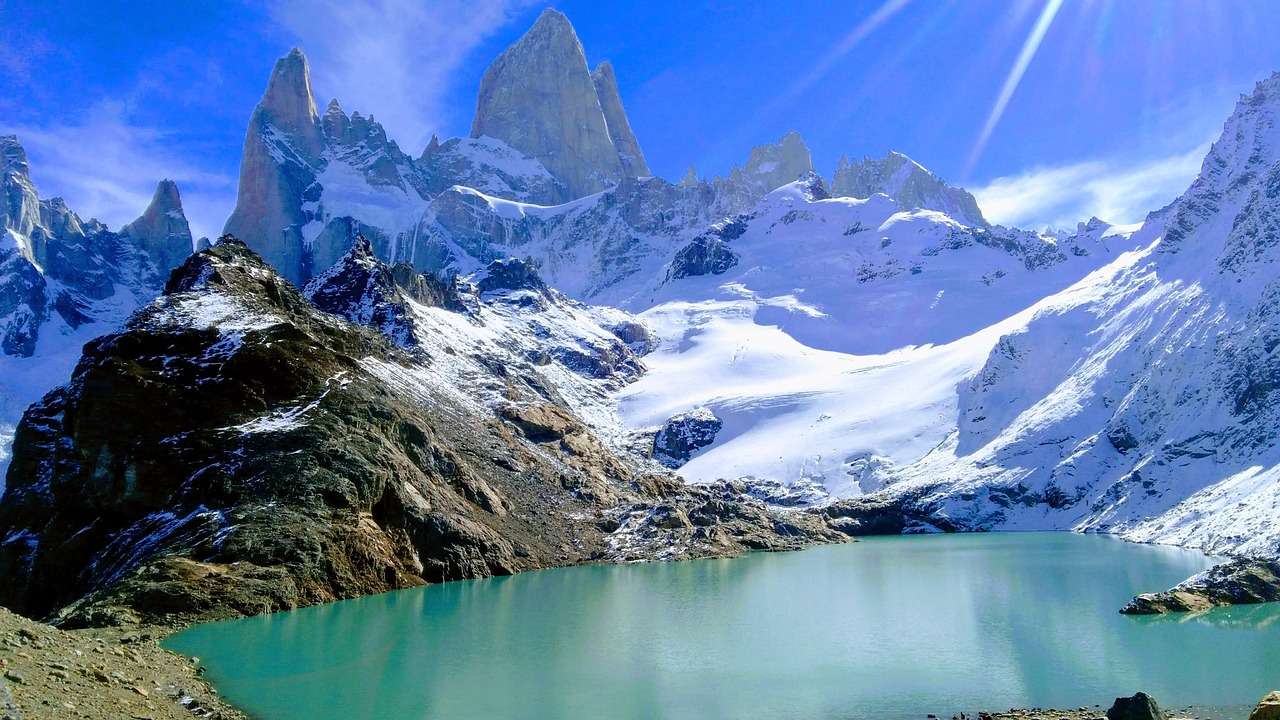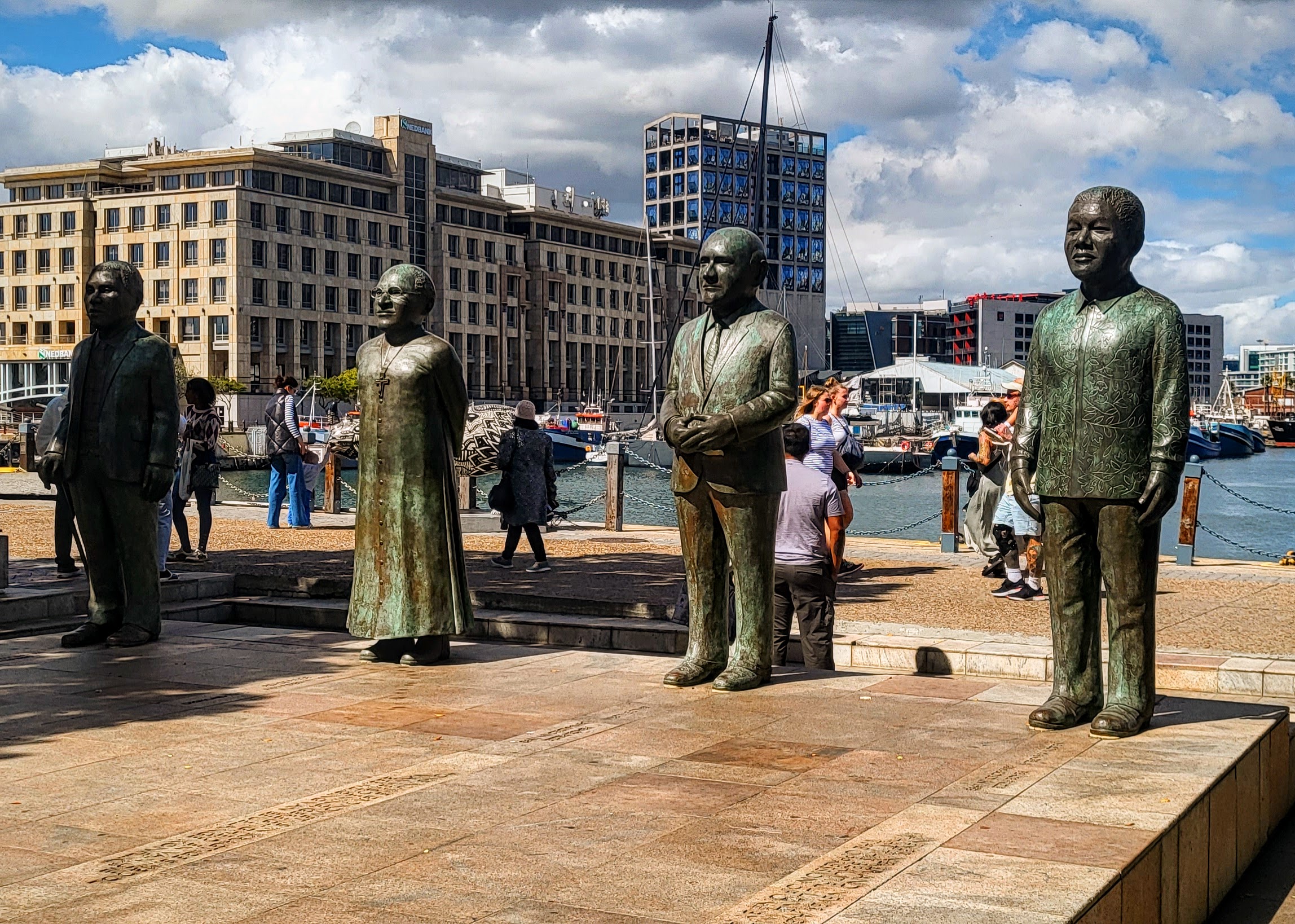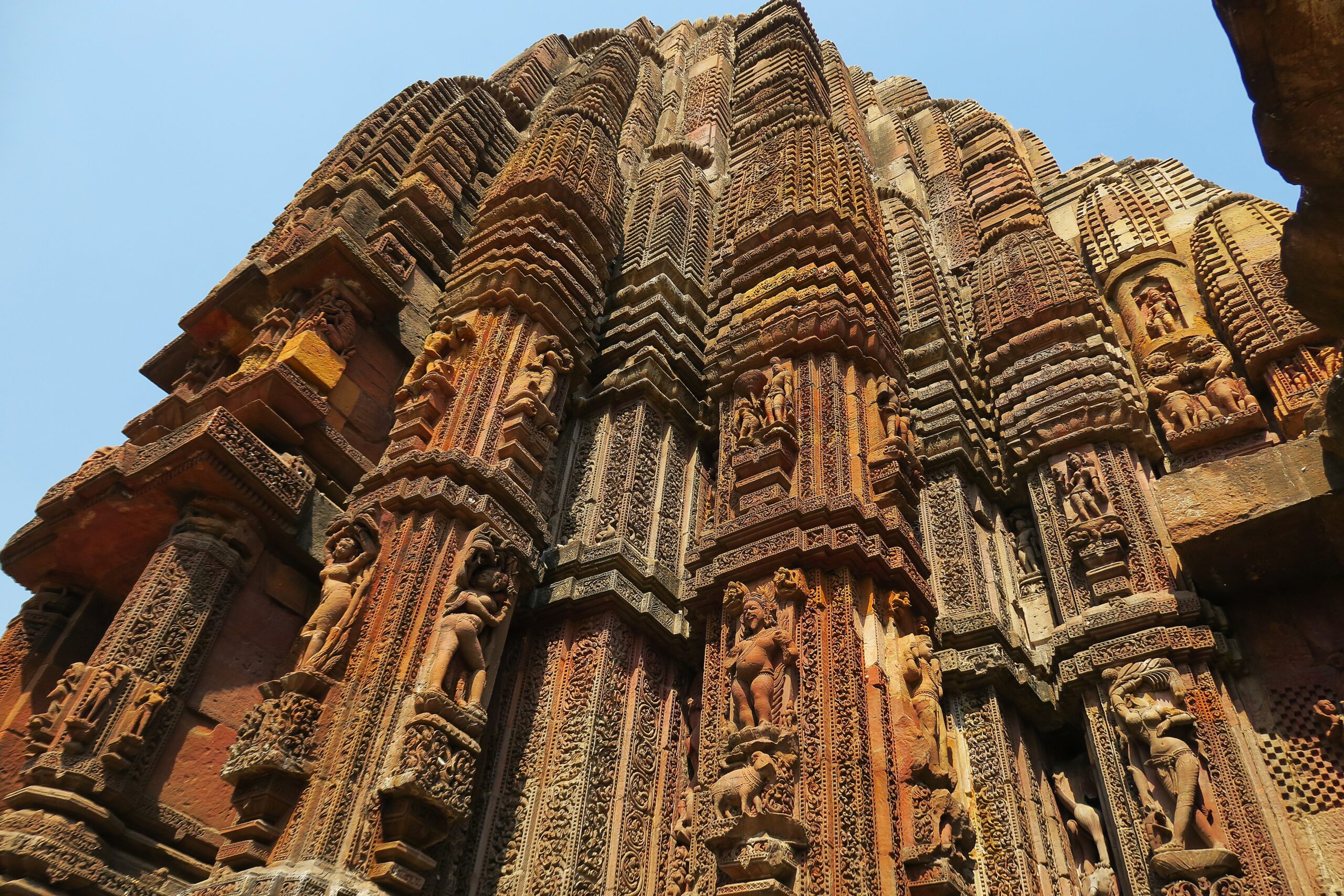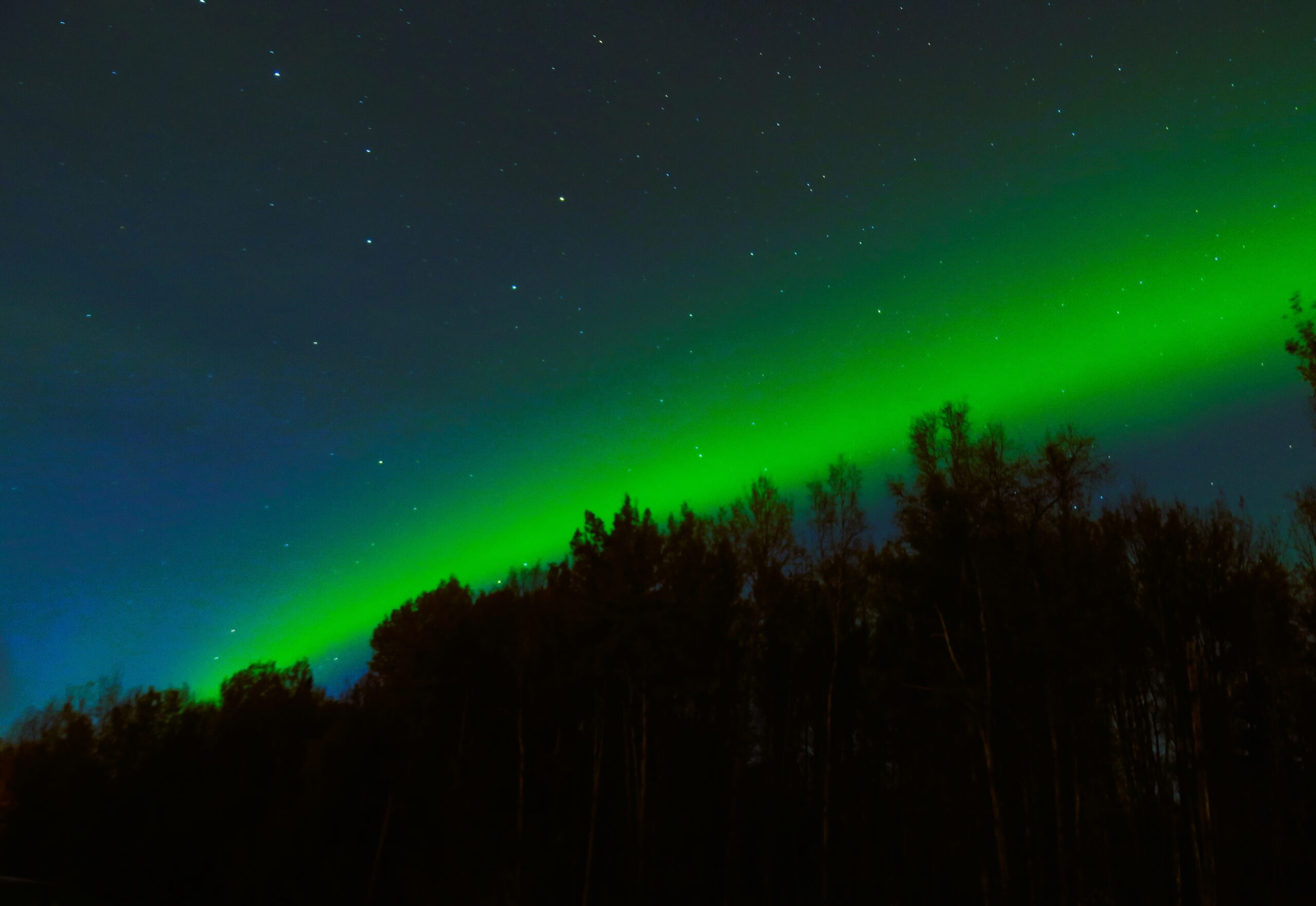10 days in Patagonia –
Hiking at the End of the World
This was published in GoWorldTravel magazine, you can read it here: https://www.goworldtravel.com/hiking-patagonia/
Arriving at the End of the World
For unparalleled mountain vistas, secure a window seat on the right side of your flight from Buenos Aires to El Calafate. This bustling town, thriving on tourism, lies approximately 800 miles south of the area where Butch Cassidy and the Sundance Kid sought refuge after fleeing New York in 1902. Patagonia’s vast expanse, shared by Argentina and Chile, boasts rugged beauty: from Argentina’s dry grasslands and glacial lakes framed by jagged, snow-capped peaks, to Chile’s lush forests and fjords. It’s a region that truly evokes the feeling of reaching the world’s end.
Upon arrival, a short taxi ride brought us to our hotel—a beautifully restored estancia on the town’s outskirts, surrounded by a working ranch dotted with grazing sheep. The town center was a leisurely 15-minute walk away. That evening, we explored various shops before dining at a parrilla-style restaurant, savoring succulent grilled lamb paired with local Malbec wine.
After dinner, we strolled to the edge of town, reaching the shores of Lago Argentino, the region’s largest freshwater lake. In the low-lying marshlands, we observed a variety of beautiful birds and visited a captivating history museum showcasing dinosaur fossils and detailing the area’s natural history.
Hiking
Our itinerary prioritized hiking. In Argentina, we aimed for the challenging 13-mile round-trip hikes to either Mount Fitz Roy or Cerro Torre, each with an elevation gain of 3,500 feet. In Chile, while the renowned W and O treks in Torres del Paine National Park span 46 and 85 miles respectively, we opted for shorter treks. Being in our early 60s and in decent shape, we chose the 13-mile hike to Fitz Roy and a 12.5-mile trek to the base of Torres del Paine over multi-day hikes.
On the Glacier
The following morning, we rose early and boarded a van to the tour company’s office before transferring to a larger bus bound for Glacier National Park. Our bilingual guide, an enthusiastic young woman, provided insightful commentary about the surrounding countryside. We spotted guanacos—llama-like creatures—and wild ostriches. At the park entrance, our tickets were checked before the bus wound through beautiful pine forests, offering glimpses of the breathtaking spectacle ahead.
Disembarking onto a series of staircases and wooden platforms—the ‘balcony’—we were greeted by a drizzle. The Perito Moreno Glacier, stretching 19 miles long and three miles wide, dramatically drops into the lake. Even in early January, the height of summer, snowflakes began to fall. A sudden, loud crack echoed as a massive chunk of ice broke off, plunging into the water with a thunderous splash.
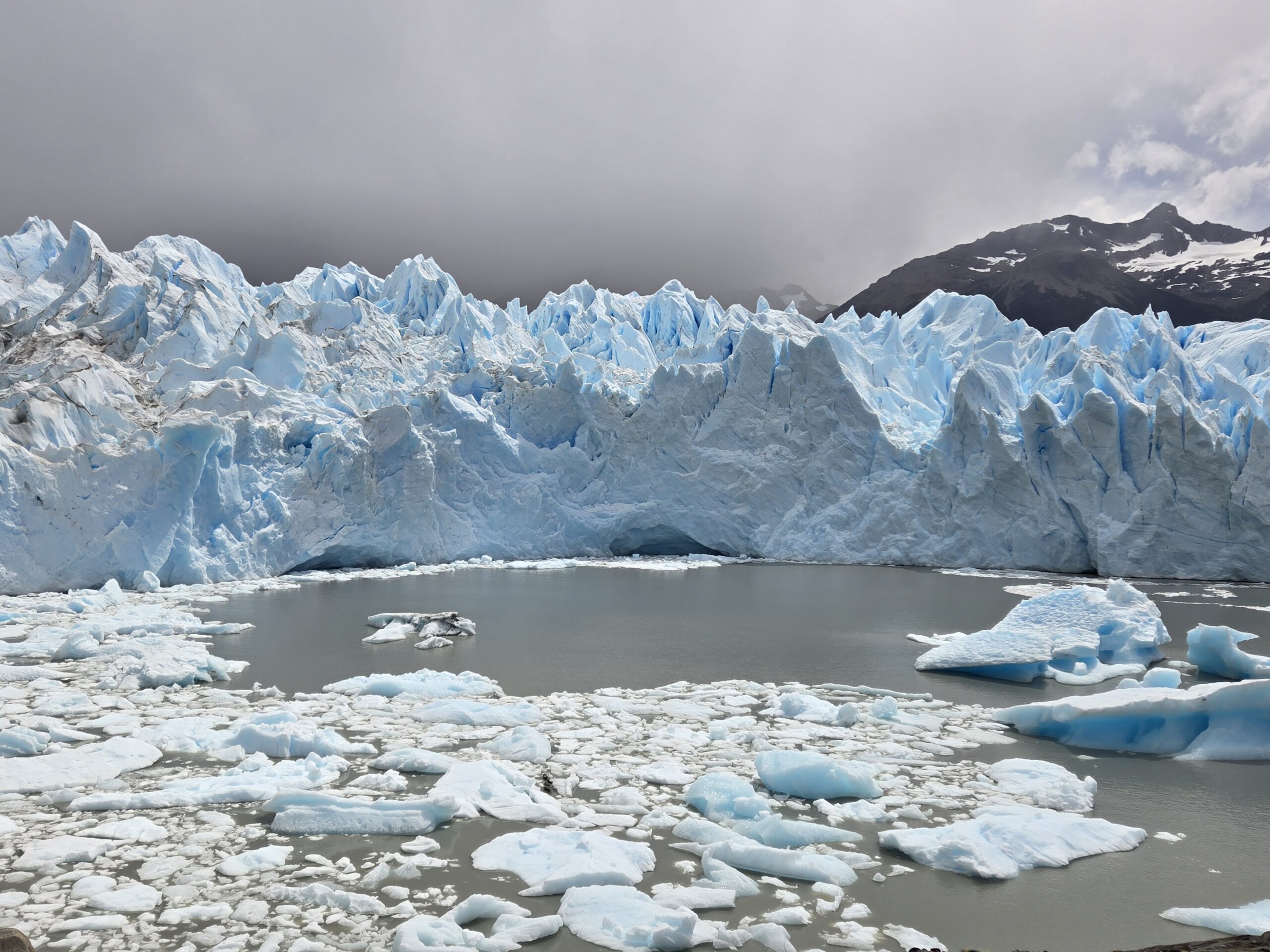
The visitor center, equipped with a cafeteria, gift shop, and restrooms, provided a brief respite before we continued our adventure. After a couple of hours, the bus took us to a small port where we boarded a 50-passenger cruiser. As the boat set sail, everyone rushed to the upper decks. Snow pelted us as an icy wind cut through, but we pressed on, eager to get closer to the glacier. From about a hundred yards away, its sheer scale became truly apparent—an awe-inspiring sight unmatched in my travels.
Disembarking, we split into two groups of 10, each led by two guides. Our guide, Fernando, a lanky, muscular Argentine, led us on a one-hour hike through dense forest, along rocky and sandy beaches, and past waterfalls until we reached the glacier’s edge. There, we donned crampons and stepped onto the ice. Each morning, guides carve out new pathways through the glacier, marking the steepest sections with poles, flags, and ropes.
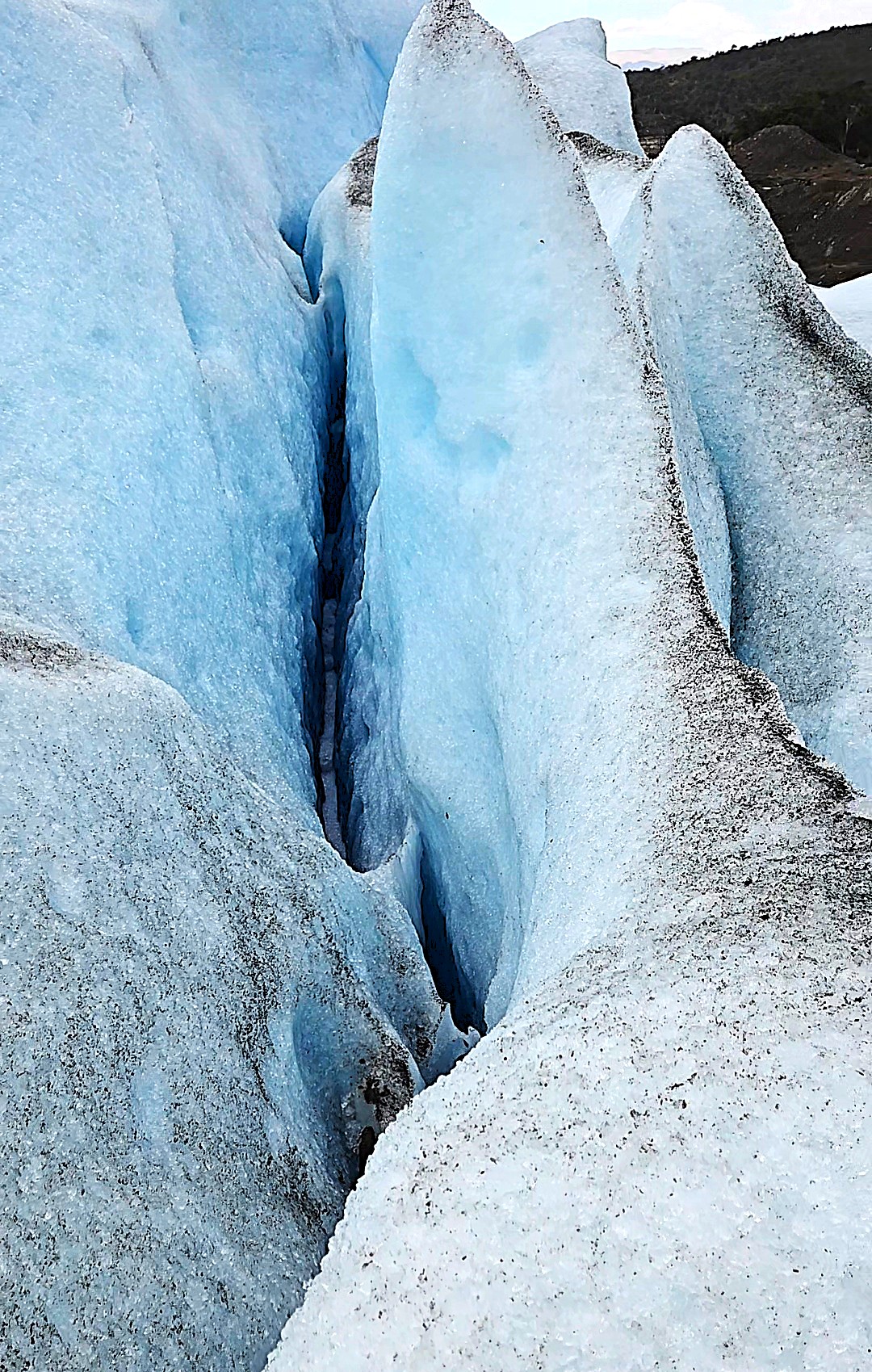
Crevasse next to our hiking path.
Hiking on the glacier was exhilarating. Initially, our progress was slow and cautious as we followed Fernando, while Pablo, the other guide, brought up the rear. We traversed narrow ridges with deep, luminous blue crevasses on either side. Ascending one ridge, descending another, then ascending again—the landscape was an endless expanse of ice. After an hour and a half of thrilling exploration, we concluded with a well-earned glass of whiskey chilled with fresh glacier ice.
That night, as darkness finally settled around 10 PM, the sky erupted in a dazzling display of stars. We bundled up and sat on our hotel patio beside a crackling fire, gazing at the spectacular Southern Hemisphere night sky.
Grueling Hike to Mt. Fitz Roy
The next morning, we took a bus to El Chaltén, South America’s hiking capital. Another tourism-driven boomtown, it is rapidly expanding, with new hotels and restaurants appearing everywhere. The double-decker buses in this region of Argentina feature reclining seats and Wi-Fi. We sat in the front row on the second floor, enjoying stunning views of the winding single-lane highway. Glacial rivers with the bluest water I had ever seen stretched alongside us. After an hour, the famed peaks of Mount Fitz Roy and Cerro Torre emerged, silhouetted against a brilliant blue sky. The bus buzzed with excitement as passengers scrambled to take photos.
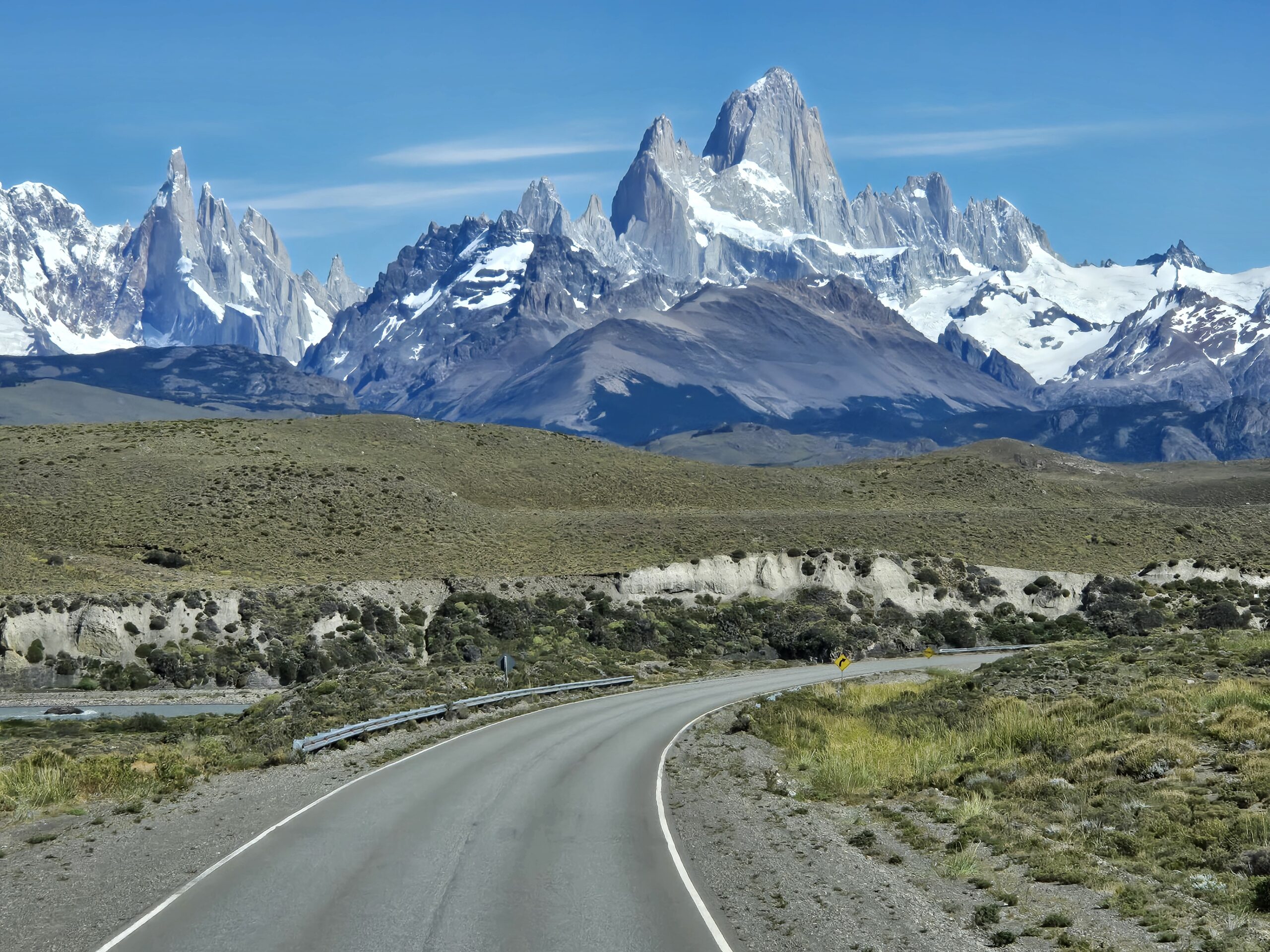
On the road to El Chalten
“If you want to hike, do it today or tomorrow,” warned a young woman at the tourist information booth. “A storm is coming, and it will rain a lot after that. We may close the trails.”
Heeding her advice, we embarked on the 13-mile Laguna de las Tres hike to the base of Mount Fitz Roy, before dawn the next morning. The strenuous trek rewarded us with breathtaking views at every turn. Condors soared overhead, and crystal-clear streams provided refreshing water refills. After nearly six hours, we crested the final ridge, revealing the stunning turquoise waters of Laguna de las Tres with the majestic Fitz Roy towering behind it. Exhausted but exhilarated, we soaked in the view before beginning our challenging descent.

Laguna de las Tres with towering Mt. Fitzroy behind, after a grueling 6.5 mile uphill hike.
The End of the World
Our next stop was Ushuaia, cleverly marketed as the “City at the End of the World.” This city serves as the gateway to Antarctica cruises and is a popular tourist destination, evident by the numerous hotels, restaurants, and shops catering to visitors. Our hotel, located on the main street, was bustling and remained noisy late into the night. Shortly after our arrival, we found ourselves longing for the solitude and peaceful beauty of the Patagonia we had left behind.
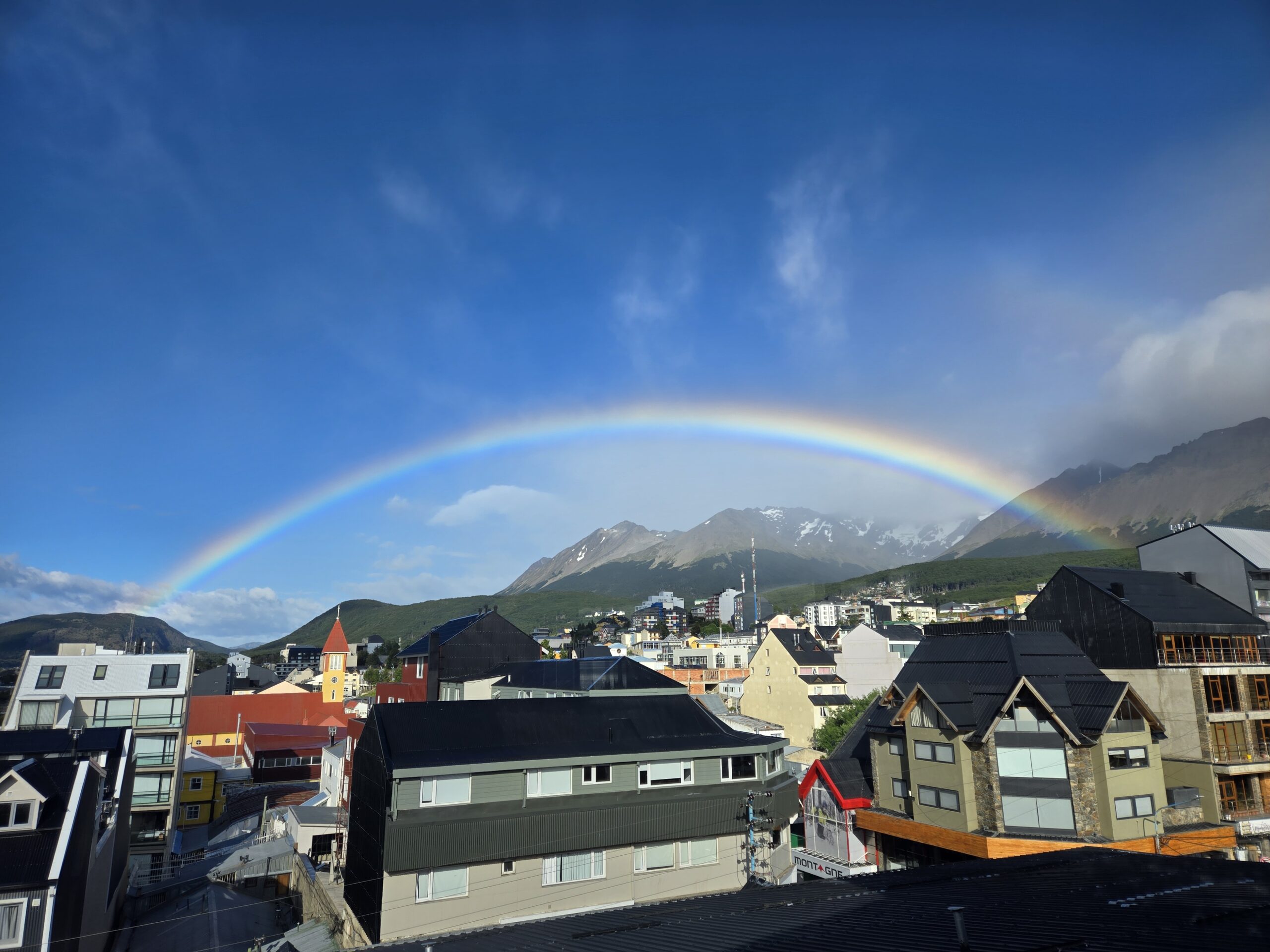
Rainbow over the town of Ushuaia (the southernmost city in the world)
I had been eager to see the Beagle Channel, named after “The Beagle,” the ship that carried my childhood hero Charles Darwin and was captained by FitzRoy. Having recently read David Grann’s bestseller “The Wager,” about the ill-fated British expedition that sailed around Cape Horn, I was looking forward to navigating the Beagle Channel, the Strait of Magellan, and the infamous Drake Passage.
The following morning, we rented a car and drove to Tierra del Fuego National Park. A short drive from town, this park is stunning, featuring dense forests, lakes, rivers, waterfalls, beaver dams, snow-covered peaks, and glaciers. We spent the entire day hiking easy trails alongside the Beagle Channel and around the interior lakes and rivers. It drizzled throughout the day, with occasional light snow flurries. We skipped the more touristy train ride and other activities on the park’s outskirts, but we did drive to the point where the Pan-American Highway ends, marked by a sign proclaiming that Alaska is 17,848 km (11,155 miles) away.
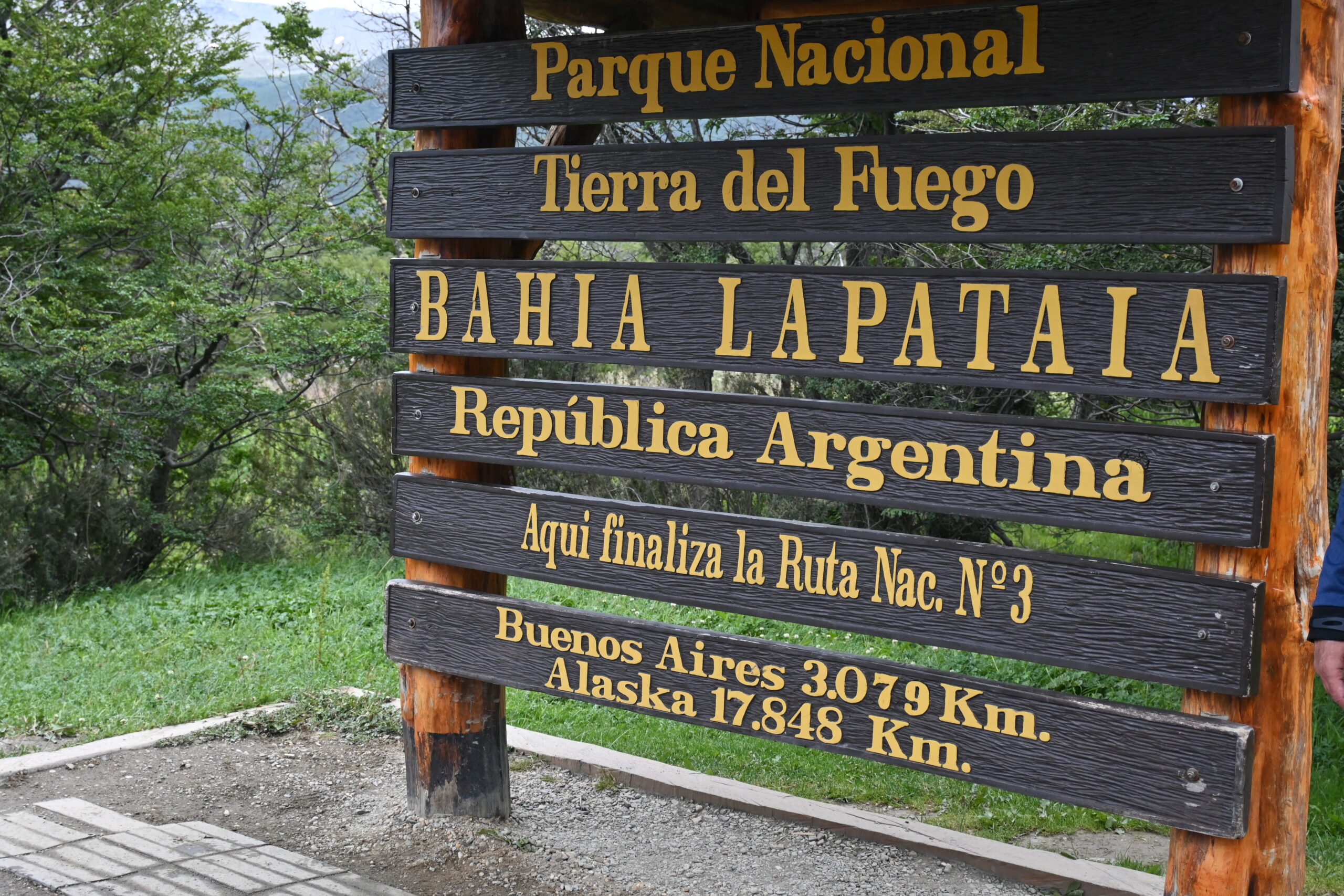
The end of the Pan-American Highway – the longest road in the world
We boarded our cruise ship to Antarctica the next afternoon, but that’s another story for another day. We returned to Chilean Patagonia the following week, landing by flight in Punta Arenas, from where we took a bus to Puerto Natales.
Chilean Patagonia
After our challenging hike to Laguna de las Tres in El Calafate, we decided to forgo the Torres del Paine base hike, opting instead to visit Bernardo O’Higgins and Torres del Paine National Parks near Puerto Natales.
We embarked on a catamaran ride through the fjords, sailing past waterfalls and glaciers. We stopped at Serrano Glacier for a short hike before indulging in a traditional Patagonian grilled meat feast at a local ranch.
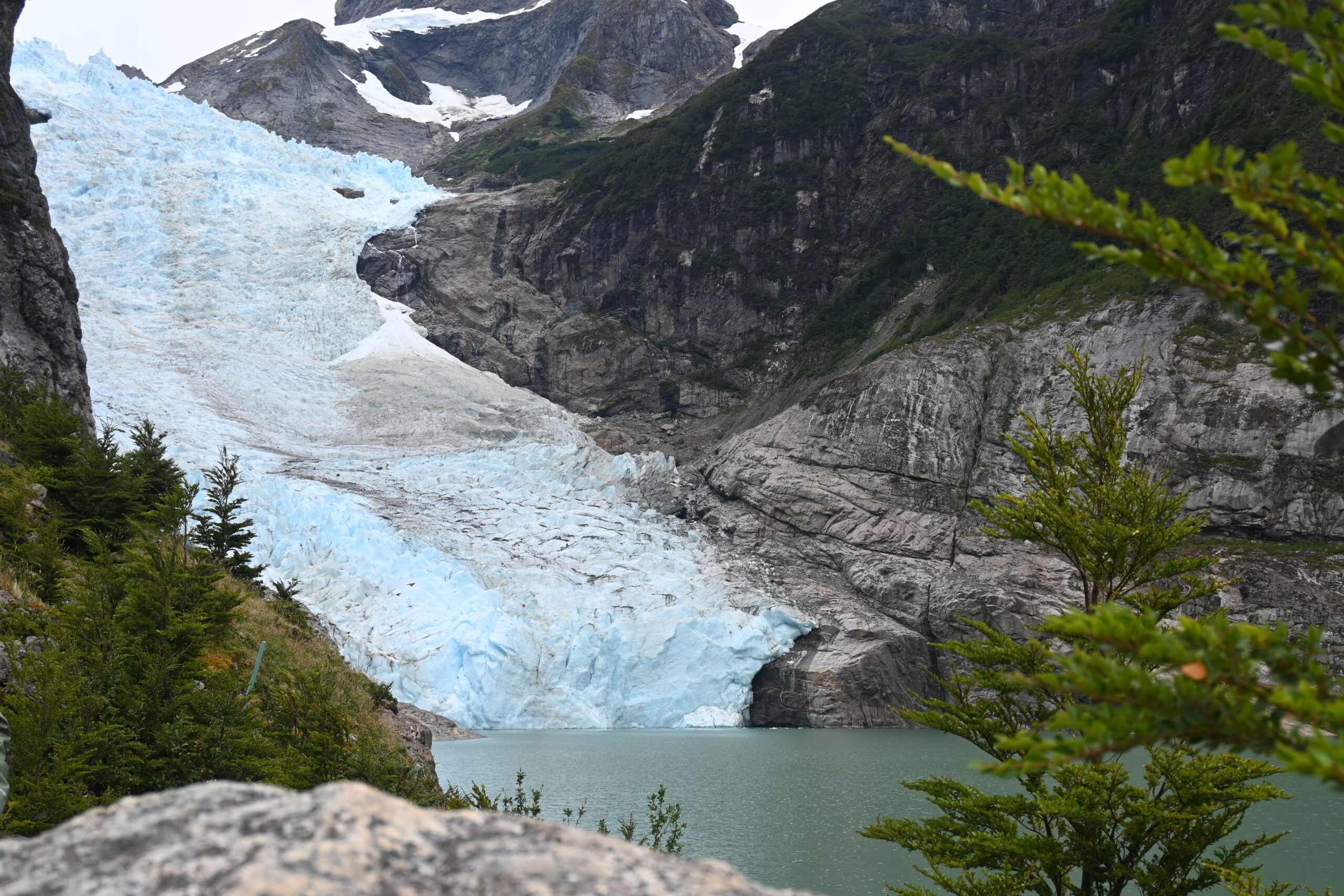
Serrano Glacier, Bernardo O’Higgins National Park, Chile
We spent an entire day driving around Torres del Paine National Park. However, the elusive peaks of the Torres remained shrouded in fog and clouds all day, and we did not catch a glimpse.
On our final night, we stayed up late, watching the sunset well past 10 PM. Patagonia had left an indelible mark on us, and we knew we would miss its wild beauty. The next morning, we caught a flight to Santiago, concluding an unforgettable adventure at the end of the world.
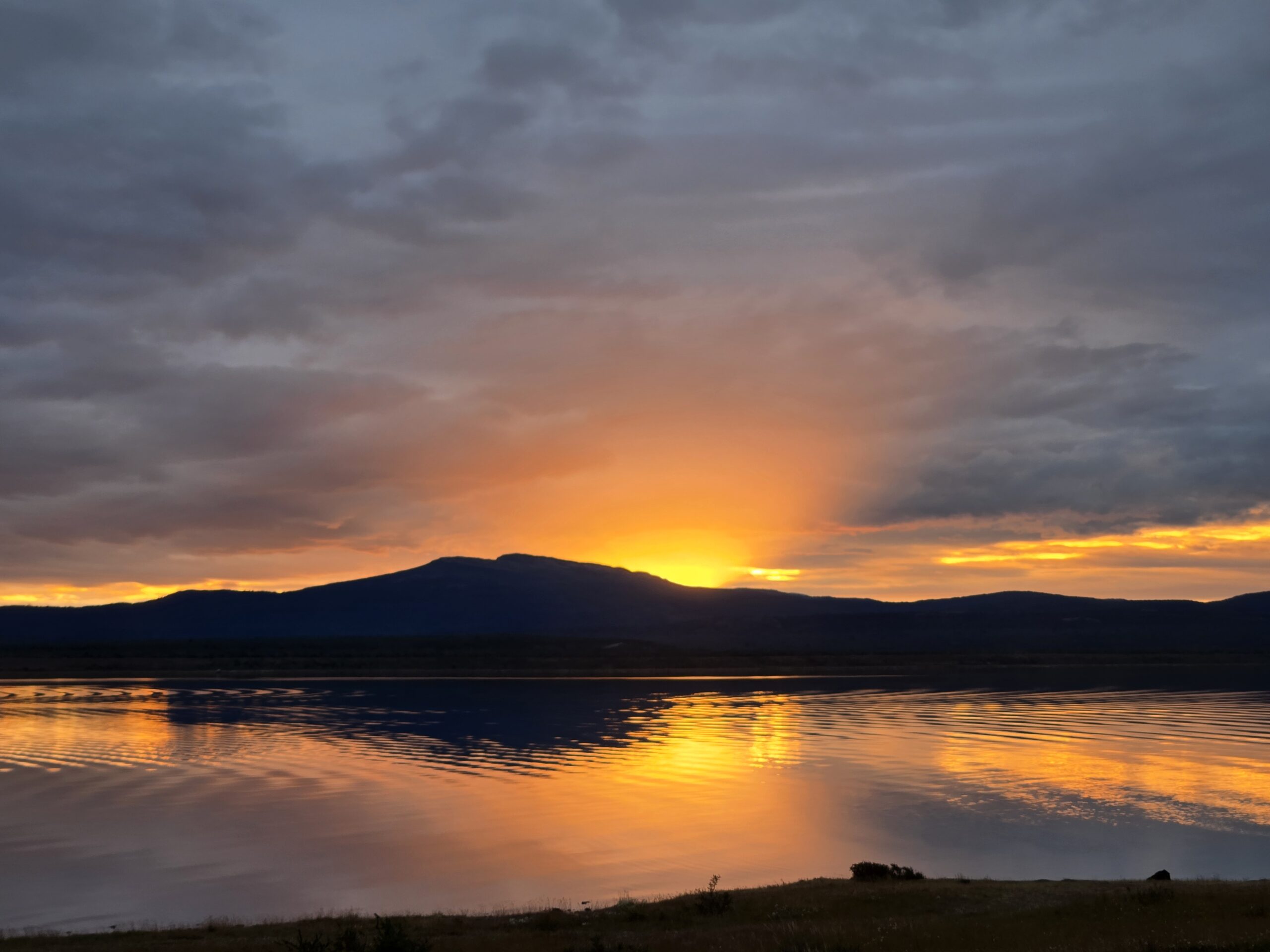
Sunset, Patagonia, Chile
If you plan to go:
El Calafate is a 3-hour flight from Buenos Aires, while Ushuaia is just over an hour by flight from El Calafate. The bus from El Calafate to El Chalten takes 3 hours and there are multiple buses daily. Puerto Natales is 3 ½ hours by flight from Santiago, Chile.
The only company allowed to take visitors trekking on the Perito Moreno glacier is: “Hielo and Aventura” (Hielo & Aventura — Glaciar Perito Moreno).
The tours and hikes in Chilean Patagonia are managed by “Howlanders “ (Howlanders – Treks, tours, adventures and outdoor activities).
